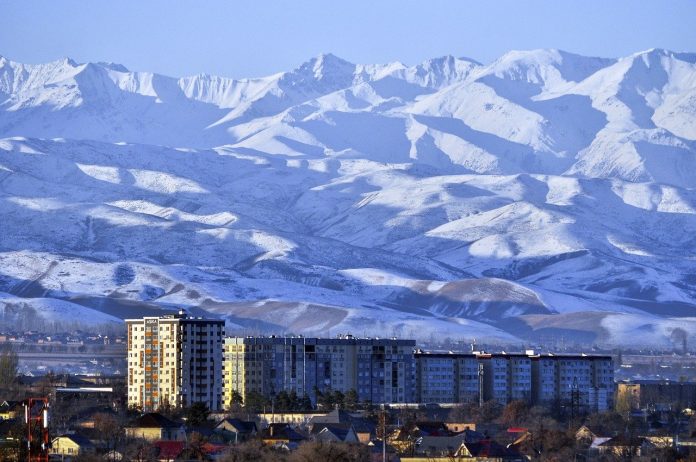By Vijay Jayaraj
Globally, winter cold kills more people than summer heat, and winter in Central Asia is no gentle visitor. Temperatures can plummet to minus 40°C (-40°F), transforming bustling cities into frozen landscapes and testing the limits of human endurance.
Rich in history and diverse in geography, the region is also known for biting cold that tests the resilience of its inhabitants. The winter struggle is especially intense in rural areas, where shelter and other infrastructure are often rudimentary. Wood and coal have long been used for heat.
For example, Kyrgyzstan, Uzbekistan, and Kazakhstan – three Central Asian countries seldom mentioned in the media – rely heavily on abundant coal reserves for heat and energy. They all have insecure energy systems, and their major cities regularly face power blackouts in Winter.
However, this economical energy source, along with natural gas and oil, have come under attack by international political institutions like the European Union and United Nations and leftist politicians and funding entities. Armed with the pseudoscience of climate change, fearmongering opportunists are seeking to ban the fuels that are a lifeline for the people of Central Asia.
Uzbekistan and Kazakhstan generate more than 95% of their electricity from gas, oil and coal. Uzbekistan is set to increase coal production by 22% and is conducting geological exploration across 31 thousand square kilometers of new sites. Meanwhile, Kazakhstan is increasing oil production and plans to increase exports to Eastern Europe.
Kyrgyzstan has more than 33% of its population living in poverty, making it significantly poorer than Uzbekistan (17% in poverty) to the west and Kazakhstan (5%) to the north. Half of Kyrgyzstan depends on traditional coal-fired stoves for cooking, and nearly all citizens depend on solid fuels such as wood, coal, and rubber for winter heating.
Raw coal prices have risen so sharply that nonprofits now are giving out free coal for families in Kyrgyzstan to stay warm. In 2021, people queued for hours in freezing weather to receive coal handouts from the government.
“In a cold winter, we burn about 5-6 (metric) tonnes,” says a Kyrgyz housewife. “It is expensive for us to buy coal at 5,500 soms ($62 a tonne). Therefore, I stand in line for three-four hours. And what are we supposed to do, freeze?”
More than 90% of Kyrgyzstan’s electricity comes from hydroelectric plants, which allows it to export the generated electricity during times of surplus. Though hydropower is a valuable resource, such high dependency on it increases the risk of power shortages in winter, which is one of the drier seasons in this relatively arid country.
Kyrgyzstan is now supplementing winter energy supplies with imported electricity from Tajikistan and recently signed contracts for importing 2 billion kilowatt/hours of electricity from Kazakhstan and Turkmenistan.
Supplies have proven to be insufficient, nonetheless. Speaking about power blackouts in January, Kyrgyz Energy Minister Taalaibek Ibrayev noted, “Electricity consumption has grown many times over, and daily usage has increased by 20.5 million kilowatt/hours. We were ready for anything but emergency power outages. We did not take such abnormal cold into consideration.”
The most obvious solution to filling its energy needs are Kyrgyzstan’s coal reserves. Undeterred by the political noise of climate change, Kyrgyzstan is embarking on an ambitious program to increase coal production with advanced technology and by privatizing mines. Mining has increased by around 30% during the past 15 years. Most of the mined coal is brown coal, or lignite, an inferior fuel that is mostly exported. The demand for higher quality coal is met predominantly by imports.
To bolster the movement of electricity imports and exports, the country is investing in the 500‑kilovolt Datka-Khodjent-Sangtuda power transmission line connecting Kyrgyzstan and Tajikistan. There is also a long-term partnership with Gazprom to improve gas supply in the country.
In addition to withstanding the annual assault of winter, Uzbekistan, Kazakhstan and Kyrgyzstan all have interests in overall security and economic development that make exploitation of natural resources like fossil fuels all the more important.
Despite the overwhelming need to develop hydrocarbon resources, restrictive climate policies press in the opposite direction. Influenced by the politics of a global green agenda, Uzbekistan’s lawmakers are aiming for a renewable energy target of 27 GW by 2030, proposing that the country should get 40% of electricity from non-fossil fuel sources. This will divert attention to expensive and unreliable wind and solar sources rather than to immediate problems like an outdated power infrastructure.
Analysts at The Diplomat say, “In Kyrgyzstan, the degree of deterioration of the power system reached 50% and now causes up to 80% of emergency shutdowns. … Without addressing the problems of outdated power transmission infrastructure, the contribution of sustainable energy transition initiatives to preventing future energy crises will still be limited.”
Climate politics has no place in the frigid expanses of Central Asia, and the region must steer clear of costly green mistakes.
Vijay Jayaraj is a Research Associate at the CO2 Coalition, Arlington, Virginia. He holds a master’s degree in environmental sciences from the University of East Anglia, U.K.
Originally published by RealClearEnergy. Republished with permission.
To read about energy security in the United States, click here.
To read more about coal power, click here.


























